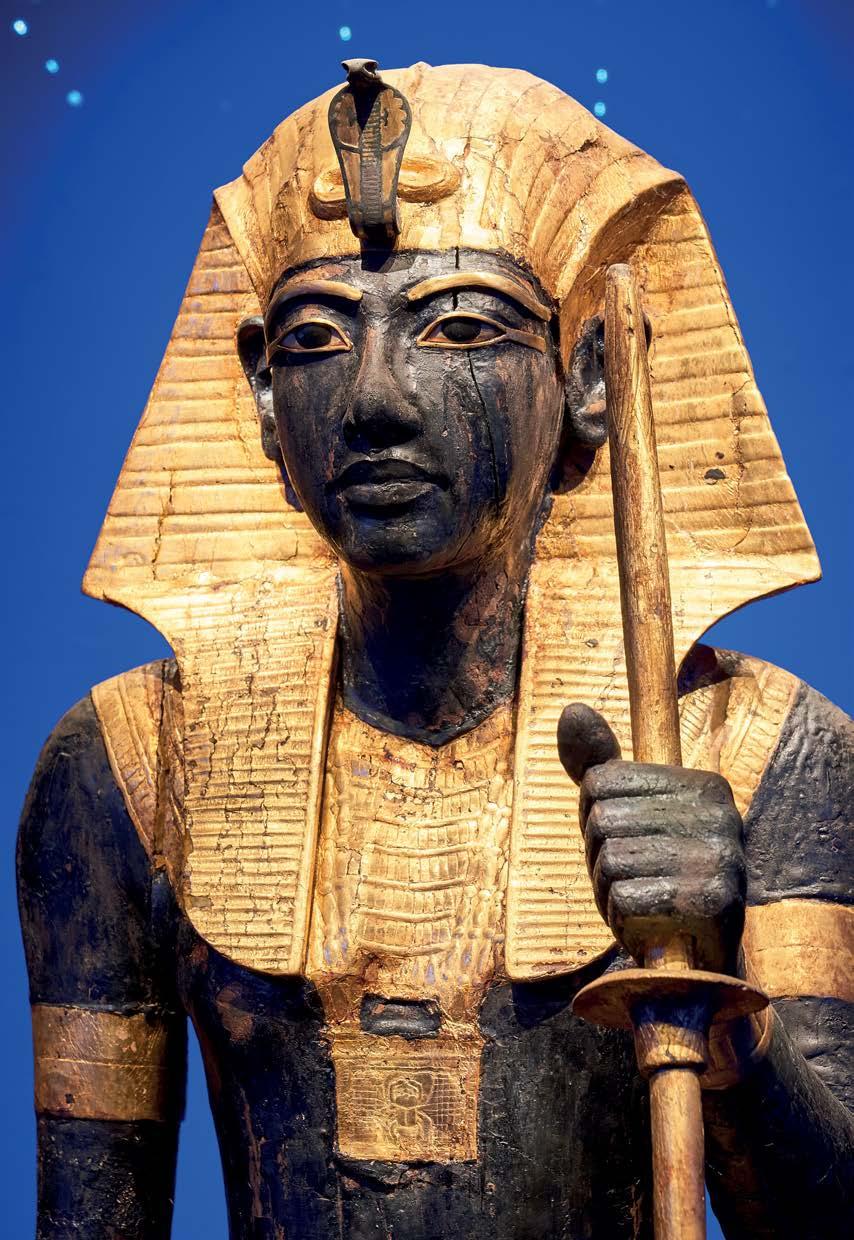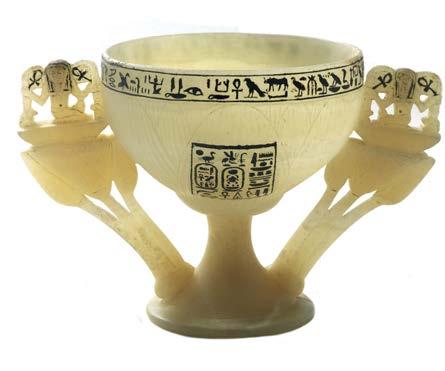
3 minute read
THE BOY KING For John Wilcott, the Tutankhamun
Seal of approval
For travel writer John Wilmott, a visit to Tutankhamun: Treasures of the Golden Pharaoh and the discovery of a long-forgotten stamp sparks memories of his childhood
Clearing out one of several junk-stu ed cupboards a few months ago, I came across something I had not set eyes on for years.
It is a square envelope with a strange printed seal on the front and a hieroglyphics puzzle on the back. Inside is a smaller envelope on which there is a Royal Mail stamp depicting the famous boy king Tutankhamun. e postmark says ‘First Day Of Issue’ with the date of April 26, 1972. e day of my 11th birthday. I had long forgotten that this had been a gift. e stamp’s value is three pence – this was a year after decimalisation.
Contained within the small envelope was a card. It turns out this little package was a rather sophisticated (for the time) promotional vehicle for Wiggins Teape, a manufacturer of speciality writing paper.
e blurb draws a parallel between the papyrus used by ancient Egyptians and the company’s ne papers – the document is printed on timeless Conqueror Vellum.
I don’t know if my rediscovery of this little prize was an omen, but just a few days later I received an email stating that Viking was to be the Presenting Sponsor for a major new exhibition, Tutankhamun: Treasures of the Golden Pharaoh, at the Saatchi Gallery in London. When this exhibition nishes touring through several countries, we will be on the cusp of the 100th anniversary of the discovery of Tutankhamun’s tomb in Egypt’s Valley of the Kings in 1922 by archaeologist Howard Carter.
My 1972 rst-day cover was produced to mark the 50th anniversary of the discovery and was part of the enormous hype surrounding a major Tutankhamun exhibition in the UK that year.
My 1972 stamp was produced to mark the 50th anniversary of the discovery of Tutankhamun’s tomb by archaeologist Howard Carter

After its opening by the Queen, more than 1.6 million people visited the British Museum to see the remarkably preserved artefacts from the tomb, with many queuing for hours – this was decades before online booking!
Years later, the well-known cartoonist Michael Heath recalled to the Telegraph: “ e whole country had gone Tutankhamun mad: there were Tutankhamun stamps, Tutankhamun pencilsharpeners, Tutankhamun vacuum asks, Tutankhamun cocktails…” At the Saatchi Gallery, the well-spaced and carefully-lit exhibits showcase the incredible richness of the pharaoh’s possessions. With more than 150 items on show, visitors will

Clockwise, from top left: John’s original 1972 stamp; Gilded wooden compound bow with glass and calcite inlay; Tutankhamun’s Wishing Cup in the form of an open lotus; Wooden statue of the King in the white crown Opposite page: Wooden guardian statue of the Ka of the King wearing the Nemes headcloth

sense the wonder that prompted Carter to exclaim “wonderful things!” when he rst peered through a hole into the tomb. Undisturbed for more than 3,000 years, the collection of statues, furniture, jewellery and weaponry, which accompanied the 18-year-old into the afterlife, is in as-new condition.
After studying it, I think I’ve worked out that the image on my stamp is a close-up of the ‘gilded wooden gure of Tutankhamun on

a ski , throwing a harpoon’, which is on display.
What struck me was the incredible craftsmanship of the antiquities – the delicate use of gold and glass, the immaculate etching on wood and leather. e artisans of the time were as skilled as those two millennia later.
If I was allowed to take one item home with me, it would be the Wishing Cup, shaped like an open lotus ower and made from travertine – a stunning piece which seems to cast a glow from within. When the exhibition nishes touring, it will be housed in the new Grand Egyptian Museum in Giza, never again to leave Egypt. An good reason, then, to put a Nile cruise with Viking on my travel bucket list so I can once more gaze upon the gleaming golden treasures and agree that they are indeed “wonderful things”. For more information about the exhibition visit tutankhamun-london.com










